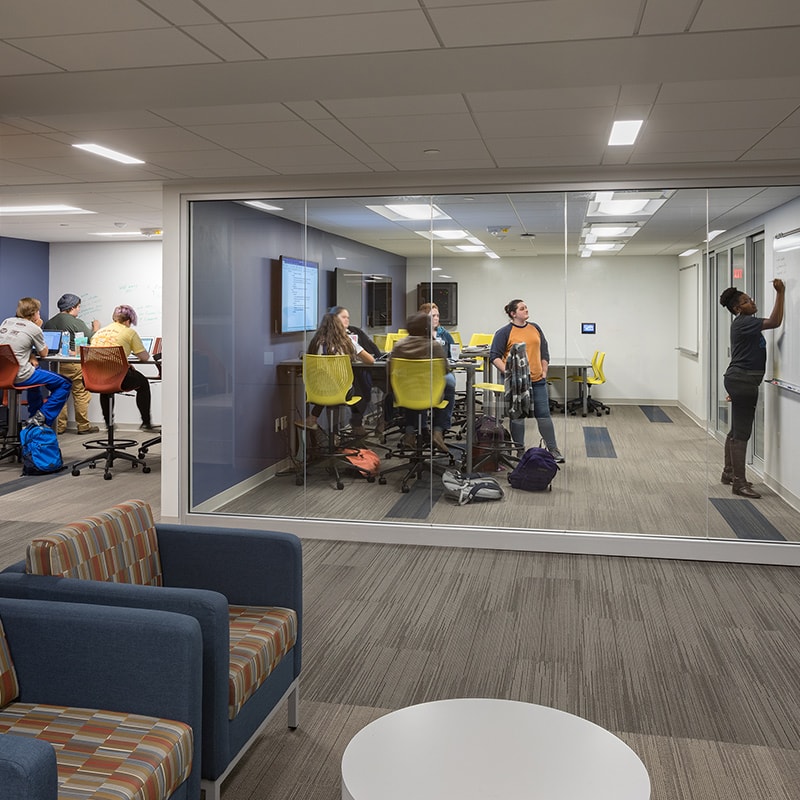3 Reasons Why Collaborative Learning Spaces Are Essential

Wednesday, December 2, 2020
As a variety of factors such as rapidly-evolving technology, the cost of education, and student diversity continually mold the landscape of modern education, student expectations of what the K-12 or college experience looks and feels like gradually change. Based upon our expertise designing collaboration spaces for a variety of educational institutions, we have summarized a few takeaways of why collaborative spaces are an essential component of any renovation or new construction.
1. Modern, collaborative learning spaces reflect nontraditional pedagogies.
Students expecting dry lectures in a one-size-fits-all classroom is a thing of the past. Lecture halls and similar rigid classroom structures lack flexibility, limit personal one-on-one interaction, and rarely maximize the benefits of technology. Collaborative learning spaces effectively accommodate and easily facilitate nontraditional pedagogies. Thoughtfully designed social spaces, mixed-use rooms with flexible furniture, and engaging “huddle” spaces that support small-group brainstorming and study sessions are the way of the future of education.
2. Collaborative learning leverages the benefits of social learning.
Social learning – the concept that we learn best by observing and interacting with people – speaks to the very essence of our humanity. After all, no matter how old or young we may be, we continually learn more about the world around us from others. Collaboration spaces tap into this powerful learning method that is unavailable in lecture hall and traditional classroom setups. Particularly in higher education, social learning environments help students refine soft skills such as teamwork, communication, and problem solving, which are necessary in today’s highly collaborative workforce.
3. Efficient campuses complement our virtual social networks.
It’s no question that online education has been on the rise long before the conditions of the COVID-19 pandemic made it necessary. In the most recent Digest of Education Statistics published by the National Center for Education Statistics, nearly 20 million students participated in distance education as of Fall 2018. Today, students expect learning environments that reflect the flexibility, comfort, and interconnectedness of modern technology. Collaborative learning spaces serve as a physical manifestation of the virtual interaction that can occur between differing academic disciplines, between educators and their students, and between students and their peers.
For some inspiration of how to create more active, collaborative learning spaces on your campus, check out some of our recent projects that facilitate active learning.
- Interdisciplinary Science and Engineering Building at Saint Louis University
- University Commons at Millikin University
- IDEA Center at The Principia
- Horton Watkins High School Addition/Renovation at Ladue School District
Contact Erik Kocher at [email protected] or (314) 529-4004 to talk about how our educational design experts can help your campus reap the benefits of collaborative learning spaces.